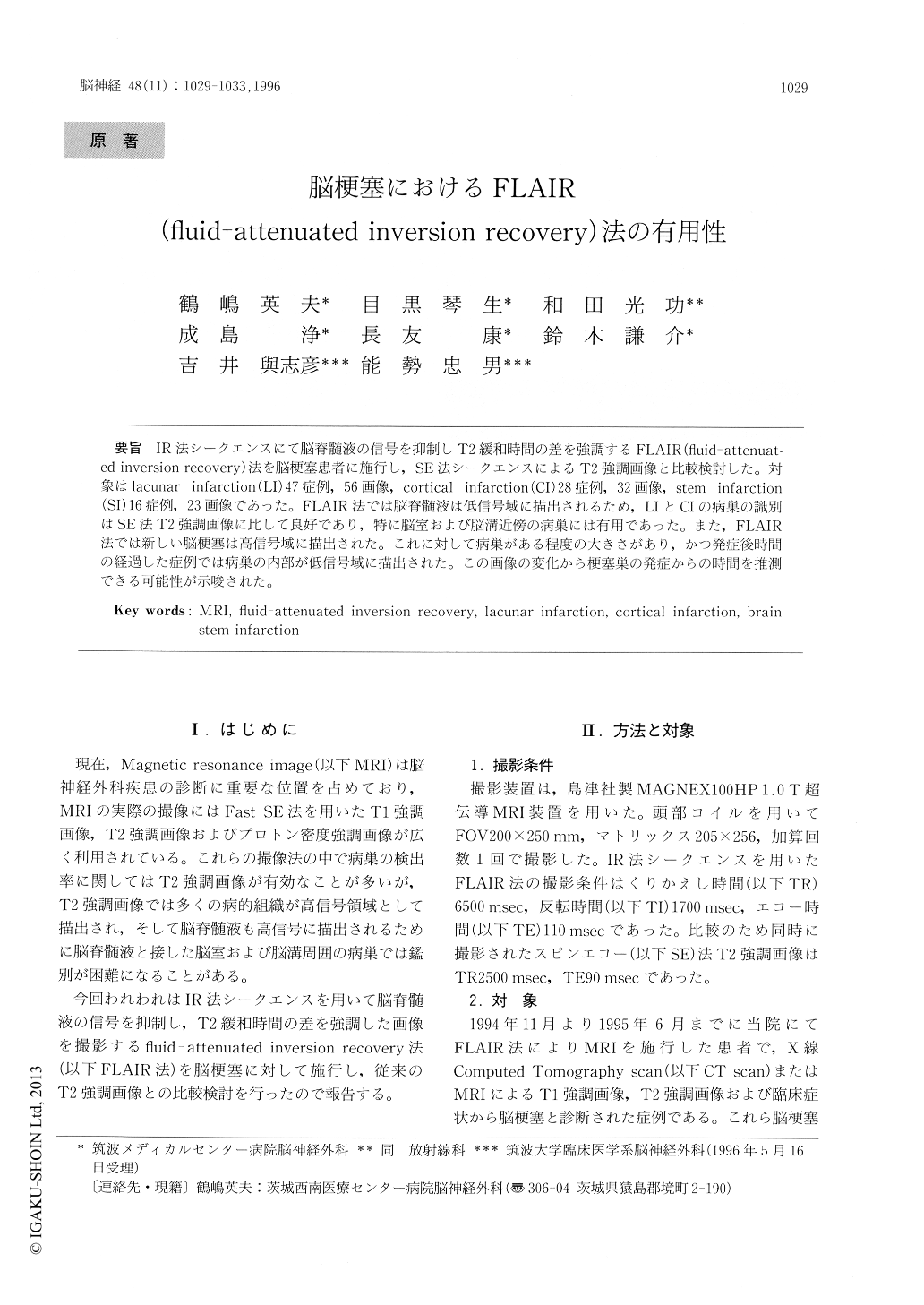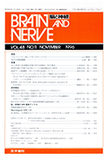Japanese
English
- 有料閲覧
- Abstract 文献概要
- 1ページ目 Look Inside
IR法シークエンスにて脳脊髄液の信号を抑制しT2緩和時間の差を強調するFLAIR(fluid-attenuat—ed inversion recovery)法を脳梗塞患者に施行し,SE法シークエンスによるT2強調画像と比較検討した。対象はlacunar infarction(LI)47症例,56画像,cortical infarction(CI)28症例,32画像,stem infarction(SI)16症例,23画像であった.FLAIR法では脳脊髄液は低信号域に描出されるため,LIとCIの病巣の識別はSE法T2強調画像に比して良好であり,特に脳室および脳溝近傍の病巣には有用であった。また,FLAIR法では新しい脳梗塞は高信号域に描出された。これに対して病巣がある程度の大きさがあり,かつ発症後時間の経過した症例では病巣の内部が低信号域に描出された。この画像の変化から梗塞巣の発症からの時間を推測できる可能性が示唆された。
FLAIR (fluid-attenuated inversion recovery) images are MR images obtained with an inversion recovery sequence having a long inversion time (TI) and a long echo time (TE) . We examined 47 cases (56 graphics) of lacunar infarction (LI), 28 cases (32 graphics) of cortical infarction (CI) and 16 cases (23 graphics) of stem infarction (SI) with a FLAIR sequence having a repetitive time (TR) of 6500 msec, a TI of 1700 msec and a TE of 110 msec, and compared these graphics with T2-weighted images by spin-echo sequence (TR 2500 msec, TE 90 msec).

Copyright © 1996, Igaku-Shoin Ltd. All rights reserved.


